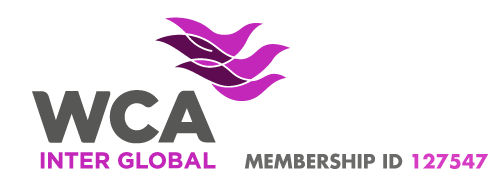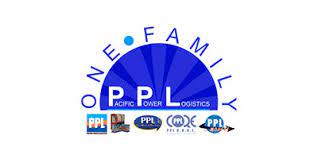GOOD TO KNOW
Road transport is a reliable and efficient way of delivering goods to their destination. With our fleet of more than 200 trailers, we offer intermodal solutions for full loads and part loads, both ambient and temperature controlled. Transportation of dangerous cargo (ADR) causes no difficulties for us. All trailers are equipped with GPS fleet management and tracking systems. We have the most diversified trailer fleet in the Baltic countries – tilt and temperature controlled, double-decker and up to an inner height of more than three meters. Our freight is covered by CMR and Freight forwarder’s liability insurance.
is the transport of goods in a single trailer of container using several means of transport to move the load from the place of loading to its destination. Your goods are not reloaded, but remain in the same trailer or container during the entire transport. This prevents transport damage, but at the same time makes use of the most optimal means of transport available on the route.
We use a wide variety of semi-trailers to fit your needs.
- Standard Tilt semitrailer with sliding roofs for easy loading and unloading of your cargo. Trailer length is 13,6 m, its width 2,48 m and height 2,7 m. All our tilt trailers are curtainsider trailers, which have canvas curtains down each side and the top (sliding roofs), which can be drawn back to make it easy to load freight. All trailers are equipped with sliding side posts to make handling your cargo even more comfortable. We can fit up to 33 or 34 Euro Pallets or 26 Fin or Standard Pallets with a total weight up to 24 tons into one trailer. For more information click here!
- Tilt semitrailer with lifting and sliding roofs for easy loading and unloading of your cargo with on inner height of up to 3,05m. Trailer length is 13,6 m and its width 2,48 m. The lifting roof makes it easy to load up to the roof beams. Using a hydraulically adjustable lifting roof, we can lift the roof 600 mm up from the driving position. For more information click here!
- Platform trailers are used for oversized loads, if due to the heights or widths of the load does not fit under the sides or roof. Trailer length is 13,6 m, its width 2,48 m and allows us to load up to 24 tons of cargo.
- Refrigerated semi-trailers for all refrigerated, fresh or dry goods transport. We manage temperatures ranging from -20˚C (deep frozen), 3˚-10˚C (chilled) up to 12˚C (heated). All trailers have ATP FRC certification and are equipped with temperature recorders. We have an amount of double-deck refrigerated trailers with the possibility for double loading of pallets to achieve maximum cost efficiency. A number of our refrigerated trailers are so-called multi-temperature trailers, offering up to two individual controllable chambers for transporting fresh and frozen goods in the same trailer. For more information click here!
- Heavily insulated semi-trailers for all goods, which need to be protected from weather conditions. All trailers have ATP IR certification and have a double-deck loading possibility.
In order to be sure food safety is not compromised during international transport of foodstuff the agreement on the International Carriage of Perishable Foodstuffs and on the Special Equipment to be used for such Carriage (ATP) was concluded in Geneva on 1 September 1970 entered into force on 21 November 1976. Equipment to be used for transport of perishable foodstuff needs to be ATP certified and regularly inspected. Our trailers have either FRC or IR certification. FRC means a refrigerated trailer (F) with heavy insulation (R) and “C” class allowing transportation at a controlled temperature from -20 to +12°C (C). IR means trailer, with heavy insulation (R), but without the mechanically refrigerated equipment the FRC certified trailers have.
We have extensive experience with the transport of foodstuff, but also transportation of dangerous cargo (ADR) causes no difficulties for us. It is clear to everyone that we have to be careful when transporting dangerous goods. That is why clear agreements have been made about this in Europe. The Agreement concerning the International Carriage of Dangerous Goods by Road (ADR) is in force already from 29 January 1968. By the ADR agreement dangerous goods are classified into 13 classes and subclasses. For each class rules are in place for road transport. Additionally, all hazardous materials have been assigned a UN number, a four-digit number to identify the exact material. For packing purposes, all dangerous goods are assigned to a packaging group, group I consisting of materials presenting high danger, group II medium and group III low danger. In order to be safe on the road, in tunnels and on the ferry, it is important to inform us about the ADR class and UN number of the goods you transport. You do not need to remember all this information, just send us a copy of the Material Safety Data Sheet (MSDS), all hazardous materials have one.
All our road freight services are conducted in accordance with the CMR Convention, General Conditions of ELFA for Carriage of Goods by Road and our own general conditions. In case of domestic transports in Estonia, the Law of Obligations Act of the Republic of Estonia (VÕS) applies. The CMR convention and other above mentioned laws and regulations relate to the legal issues concerning transportation of cargo by road. The International Road Transport Union (IRU) developed a standard CMR waybill, based on the requirement of the CMR convention. This CMR waybill, or CMR in short, is accepted and recognised throughout Europe and this is the transport document which must accompany the goods when transported. It is recommended also to send a commercial invoice or packing note with your shipment.
We do everything to avoid damages to your cargo. Unfortunately, unforeseen factors may also arise, over which we unfortunately have no control. Therefore, we have a Freight forwarder’s liability insurance, based on the conditions as agreed in the CMR convention. The main subject to think about before ordering transport is the value of your goods. According to the CMR convention the liability of a carrier is limited to about 9-10 € per kilogram of gross weight and additionally there are some other limitations to the carrier’s liability. If your load exceeds these limits, we recommend a separate cargo insurance to make sure all risks are covered. We are happy to offer you separate cargo insurance to make sure all risks are covered.
Customs clearance, the process of declaring goods to Customs authorities when entering or leaving a country, is necessary for all loads entering or leaving the European Union. You do not need it to send our goods to some country inside the EU, like Germany or Sweden. The purpose of customs clearance is to make sure that all applicable import duties and taxes are paid and that goods comply with all relevant regulations. To clear customs, you are obliged to provide detailed information about the shipment (value, origin, destination, contents etc). Handling your shipment’s paperwork correctly, understanding every changing laws and regulations is difficult and time-consuming. We handle customs clearance for all our customers who need it.
We offer solutions for the international transports of Full Trailer Loads (FTL or Full loads) and Less than Trailer Loads (LTL or part loads). A full trailer load describes goods that are moved by semi-trailer and the goods occupy the entire space in such a trailer. This means your cargo takes up 13.6 loading meters (LDM). One loading meter equals 1 meter of the total space of the length of a truck. A full load can consist of 33 Euro pallets, but also of anything up to 24 tons taking up the total space in the trailer. Full trailer loads are generally not reloaded and stay in the trailer during the whole transport from loading to unloading at its final destination. LTL shipments are smaller shipments and do not occupy the entire trailer. The transport company normally consolidate several LTL shipments in order to fulfil the trailer. Also LTL shipments are generally not reloaded and stay in the trailer during the whole transport from loading to unloading at its final destination. Shipments, which are trans-shipped through some transport terminal , we call groupage shipments.
In order to be able to compare the volumes of different shipments enabling us to plan our trailers and to fairly distribute the cost of the transport between the customers, whose LTL shipment are loaded on one trailer, we use a Tax Weight calculation. The loading space of a trailer is limited in length (13,6 LDM), in volume (depending on the trailer type about 75 m3) and in weight (about 24 tons). Tax weight is the largest length/weight/volume indicator of a shipment and allows to reduce cargoes of different weight, volume and shape to one universal size. In order to calculate the tax weight of a shipment, you always have to compare the real weight with the amount of LDM multiplied by 1850 kg and the amount of cubic meters multiplied by 333 kg. The largest value of those three is the Tax weight of the shipment.
- 1 m3 = 333 kg tax weight;
- 1 LDM (loading meter) = 1850 kg tax weight;
- 1 EUR pallet (1.2*0,8 m) = 740 kg tax weight;
- 1 FIN or standard pallet (1.2*1.0 m) = 925 kg tax weight.
The rates we offer consist of two components, the base rate and the fuel surcharge (BAF – Bunker adjustment fee). The fuel surcharge is set as a percentage of the base rates. The purpose of our fuel surcharge is to compensate for fluctuating fuel prices, without being forced to adjust our base rates too often. We inform our customer about our fuel surcharge BAF development at the beginning of every month by email.
We are happy to accept transport orders from our customer through whatever channel comfortable. We offer the possibility to connect to us through our Extranet, our private network that allows customers access to our system for bookings, invoices and document exchange. With larger regular customer we have the possibility to set up EDI-connections (electronic data interchange), enabling customers to send bookings, receive invoices and documents directly into their own working environment.
Via 3L Freight membership to PPL Networks and WCA Inter Global
WCAworld

With over 9,503 member offices in 194 countries around the world, WCAworld is the world’s largest and most powerful network of independent freight forwarders. The combined logistics might of the WCAworld membership exceeds that of even the world’s largest multinational freight forwarders.
PPL NETWORKS

PPL Networks management has many years of hands on experience in all segments of the logistics industry. PPL is derived from our name Pacific Power Logistics, headquartered in Hong Kong with a global presence in over 120 countries.
PPL Networks is a fast growing and dynamic family of networks for independent freight forwarders and logistic service providers. PPL Networks aims to support its members to develop their logistics businesses on a global scale.



